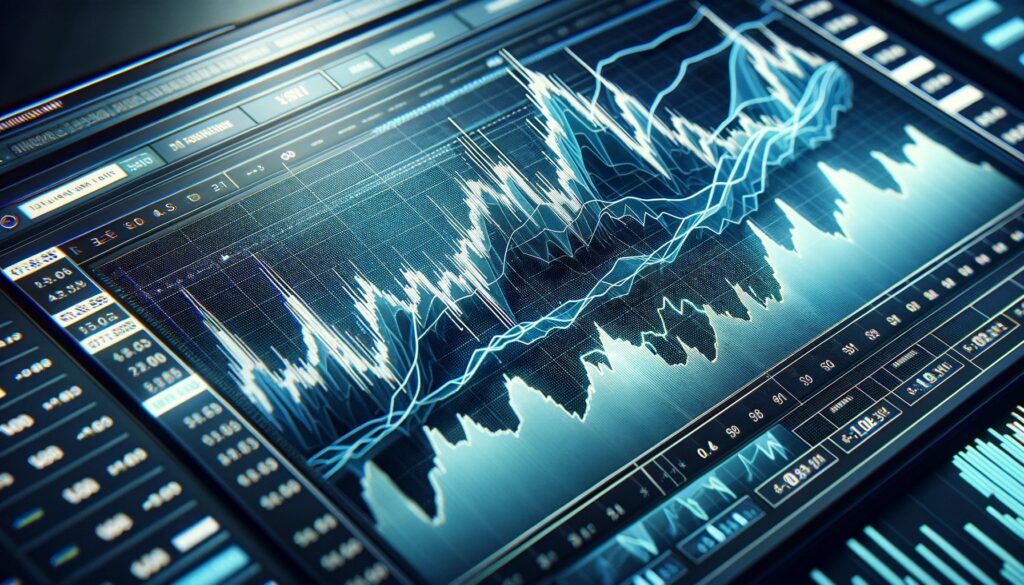In the fast-paced world of financial markets, having a well-crafted strategy that includes the best indicators in trading is crucial for success. These indicators serve as the compass and map for navigating the volatile waters of trading, helping traders to identify potential opportunities, make informed decisions, and, ultimately, maximize their market edge. This comprehensive guide dives deep into the essence of trading indicators, shedding light on how they can be utilized to forge a path towards trading excellence.
Introduction to the Best Indicators in Trading
The journey towards trading mastery begins with an understanding of the tools that can significantly enhance decision-making processes. Among these tools, trading indicators hold a place of prominence. They are not mere mathematical formulas but are the very lifelines that connect traders to the underlying market dynamics. By providing insights into trends, volatility, momentum, and volume, the best indicators in trading equip traders with the necessary information to make strategic moves.

The Foundation of Trading Success: Understanding Indicators
What Are Trading Indicators?
At their core, trading indicators are statistical calculations based on the price, volume, or open interest of a security. They are designed to predict future market movements, offering traders a glimpse into the potential direction, strength, or weakness of a market. The beauty of these indicators lies in their ability to transform raw data into actionable insights, thereby enabling traders to cut through the noise of the market.
Why Are Indicators Crucial in Trading?
Indicators are indispensable in trading for several reasons. Firstly, they provide objective measures of market conditions, helping traders to avoid the pitfalls of emotional decision-making. Secondly, indicators can highlight trends and patterns that might not be immediately apparent, allowing traders to capitalize on opportunities that others may overlook.
Top Best Indicators in Trading
To harness the full potential of market indicators, traders must familiarize themselves with the most effective tools available. Here are some of the best indicators in trading that have stood the test of time, proving invaluable in the quest for market success.
1. Moving Averages (MA): The Trend Follower’s Guide
Moving averages are among the most popular and easy-to-use indicators. By smoothing out price data over a specific period, MAs provide a clear view of the underlying trend, helping traders to identify potential entry and exit points based on the movement of prices relative to the moving average.

2. Relative Strength Index (RSI): Gauging Market Momentum
The RSI is a momentum oscillator that measures the speed and change of price movements. It operates on a scale of 0 to 100, indicating overbought or oversold conditions. This makes the RSI an invaluable tool for traders looking to capture reversals in the market.
3. Moving Average Convergence Divergence (MACD): The Trend’s Momentum
The MACD is a sophisticated indicator that reveals changes in the strength, direction, momentum, and duration of a trend. By analyzing the convergence and divergence of short-term and long-term moving averages, traders can pinpoint potential buy or sell signals.

4. Bollinger Bands: Understanding Market Volatility
Bollinger Bands expand and contract based on market volatility. These bands provide traders with insights into potential price highs and lows, offering a dynamic view of the market’s volatility and potential breakout points.
5. Fibonacci Retracement: The Predictive Power of Mathematics
Fibonacci retracement levels are based on the key numbers identified by mathematician Leonardo Fibonacci. These levels are used to identify potential support and resistance levels, offering traders predictive insights into market movements.
6. Stochastic Oscillator: Identifying Overbought and Oversold Conditions
The Stochastic Oscillator is a momentum indicator that compares a particular closing price of a security to its price range over a specific period. This indicator is key for identifying overbought or oversold conditions, signaling potential reversals.

7. Ichimoku Cloud: The Comprehensive Market View
The Ichimoku Cloud offers a holistic view of the market by integrating multiple indicators into one comprehensive chart. This indicator provides insights into market trends, momentum, and support and resistance levels, making it a versatile tool for traders.
Maximizing Your Market Edge with the Best Indicators
While having the right indicators is a step in the right direction, the real art lies in their application. Here are some strategies to maximize your market edge using these indicators:
- Combine Indicators for Comprehensive Analysis: No single indicator can provide all the answers. Combining different indicators can offer a more rounded view of the market.
- Tailor Indicators to Your Trading Style: Whether you’re a day trader or a long-term investor, adapt the indicators to suit your trading style and objectives.
- Continuous Learning and Adaptation: The market is always evolving, and so should your use of indicators. Stay informed about new developments and be willing to adapt your strategy as needed.

FAQs
How do I choose the right indicators for my trading strategy?
Choosing the right indicators depends on your trading style, goals, and the market conditions you typically navigate. For trend followers, Moving Averages and MACD could be foundational. If you’re more concerned with momentum, the RSI and Stochastic Oscillator might be more appropriate. Test different indicators with historical data to see which aligns best with your strategy, and remember, simplicity often trumps complexity. Using too many indicators can lead to analysis paralysis, where decision-making becomes overly complicated.
Can I use multiple indicators simultaneously?
Yes, using multiple indicators simultaneously is a common practice among traders. It’s recommended to use indicators that complement each other without providing redundant information. For example, combining a trend indicator like the Moving Average with a momentum indicator like the RSI can give you insights into both the direction and the strength of the market trend. However, it’s crucial to avoid overloading your charts, as this can make it difficult to interpret the signals accurately.
How important is it to customize indicators?
Customization is key to aligning indicators with your trading strategy. Most indicators come with default settings, but these may not be suited to your trading timeframe or the specific asset you’re trading. Experiment with different settings to find what works best for you, keeping in mind that the goal is to enhance your ability to make informed decisions. For instance, adjusting the periods on a Moving Average can make it more responsive or smoother, depending on your needs.
Are these indicators suitable for all types of markets?
While the best indicators in trading are versatile, their effectiveness can vary across different markets and conditions. Some indicators, like Moving Averages, are widely applicable across stocks, forex, commodities, and more. Others may perform better in markets with high volatility or liquidity. It’s vital to understand the nature of the market you’re trading in and adjust your indicator choice accordingly. Practice and experience will be your best guides in determining which indicators suit your market of choice.
How do I keep up with new developments in trading indicators?
Keeping up with new developments in trading indicators involves continuous education and networking with other traders. Follow reputable financial news outlets, participate in trading forums, and attend webinars or workshops. Many trading platforms also offer educational resources and updates on the latest tools and indicators. Embrace the learning curve, and be open to experimenting with new indicators while critically assessing their value to your trading strategy.
Conclusion
The best indicators in trading are more than just tools; they are the essence of strategic market analysis and decision-making. By understanding and applying these indicators effectively, traders can significantly enhance their chances of success in the competitive world of trading. Remember, the ultimate goal is not just to follow the market but to anticipate its moves, and with the right indicators at your disposal, you’re well on your way to mastering the art of trading.





